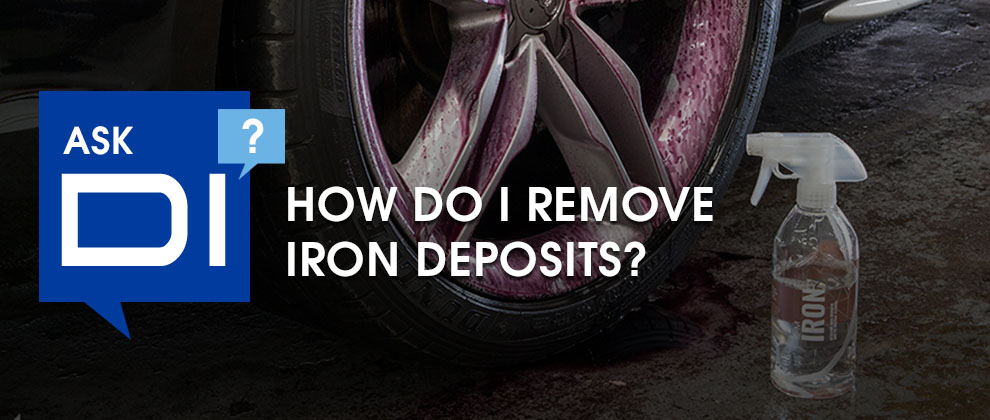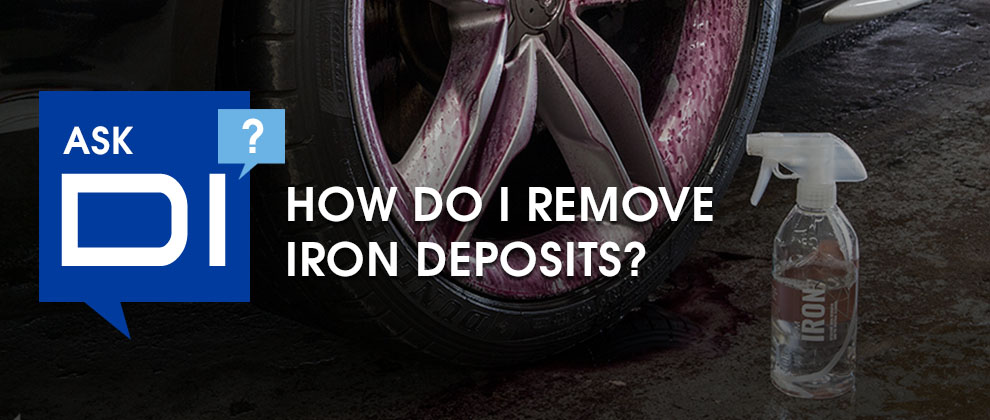
What Are Iron Deposits?
Iron deposits can be called anything from industrial fall out, rail dust, or even brake dust. This type of contamination occurs from small metal particles landing on your paint, causing what looks like small rust specs. Generally iron deposits come from transportation on a rail car during delivery and from your brake pads or other brake pads from neighboring vehicles on the road. These specs are much easier to see on light colored paintwork, however, it can happen on dark colored paint as well. Take a look at the photo below from Ian Martinez and his IGL Ecoclean Iron Review. This photo will help show what iron deposits look like.
How Do I Remove Iron Deposits?
First, make sure you thoroughly wash your paint, removing any loose dirt and grime. It is best to do this in a shaded area to help prevent water marks as you will need to keep the vehicle wet during this process. For some washing and drying tips, check out the recommended step by step process by clicking here.
With the vehicle still wet, reach for a dedicated iron remover. We carry many here at DI and some of our favorites are the Gtechniq W6 Iron and General Fallout Remover, CarPro Iron X Iron Remover, P&S Iron Buster Wheel & Paint Decon Remover, and the Gyeon Iron. These high quality formulas interact with the contaminants embedded in your clearcoat, dissolving and loosening them. To apply, simply spray onto the surface, let dwell, and rinse clean. Please note that most of these iron removers STINK. The first time we received one in our warehouse we thought it was the wrong shipment and that something was leaking. That was actually not the case and this smell was normal. While manufacturers have made strides to better the smell, sulfur or rotten eggs can still be pretty pronounced, so keep that in mind when using these products. After spraying onto the surface, most formulas will go on clear, but will turn to a dark purple color once they start to interact with the deposits. Do not let the product dry on the surface and thoroughly wash and rinse away once the dwell time is up. You can apply these cleaners to your paint, wheels and trim pieces and the process above generally removes most of the deposits. However, if you have any deeply embedded deposits agitating with a wheel or paint brush, along with a wash mitt will help. Take a look at the photo below from Ivan Rajic and his, What Is Rail Dust & How Do You Remove It article. This photo provides you with a great idea on how this decontamination process will look.
While the process above should remove most, if not all, of the iron deposits, some may remain. If you have this issue, you can use a clay bar to help pull the loosened iron deposits from the surface. I personally love the Clay Magic Fine Grade Clay Bar and the Nanoskin Glide as the clay lube to reduce friction between the clay bar and the clearcoat. Start by spraying glide onto the surface and then gently rub the clay bar back and forth. Clay one panel at a time, spraying lubricant as you go. During this process, you will feel the clay bar grab or stick in places, but once you make a couple passes it will glide smoothly. This is how you know the contaminants are being removed and you can always double check the area as you will notice the rust color marks removed from the surface as well.
What Do I Do After Removing Iron Deposits?
Nothing! Well, that is not completely true. During the process listed above, you have essentially thoroughly washed, decontaminated, and dried your vehicle. This leaves you with an incredibly clean surface ready for you to polish away imperfections, or simply apply your favorite wax, sealant, or coating. Or maybe even both, the rest is up to you!
Take a look below at some bonus articles covering iron deposits, along with a link to some of our favorite iron deposit removal items.
Bonus Articles:
- What Is Rail Dust & How Do You Remove It?
- Product Review: Griot’s Garage Iron and Fallout Remover
- Product Review: CarPro Iron X Iron Remover
- Product Review: IGL Coatings Ecoclean Iron
- How to Remove Rail Dust with CarPro IronX and a Clay Bar
- Explaining the Decontamination Process (Part 2)
- Decontamination: Part 2 – Why Iron Removers? (Is It Necessary)
- Product Review: Gyeon Iron
Buy Products From This Article
